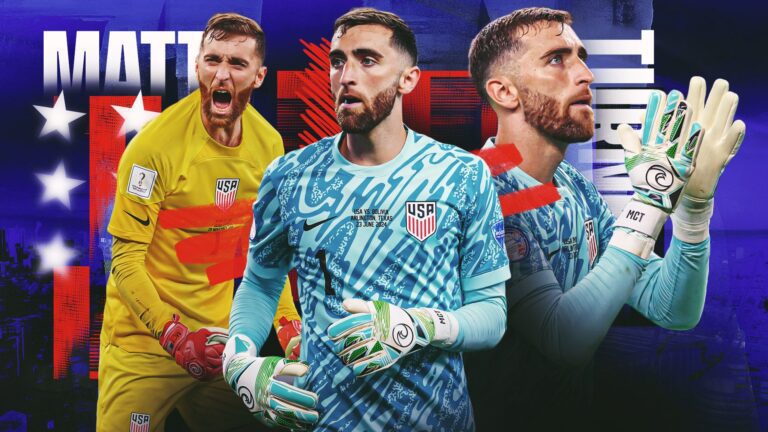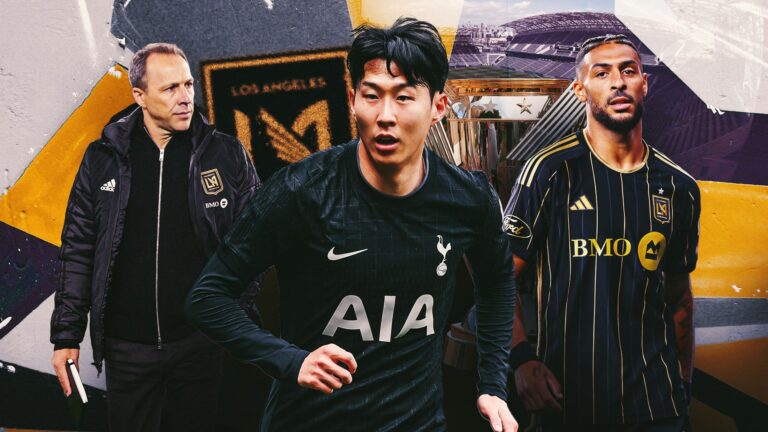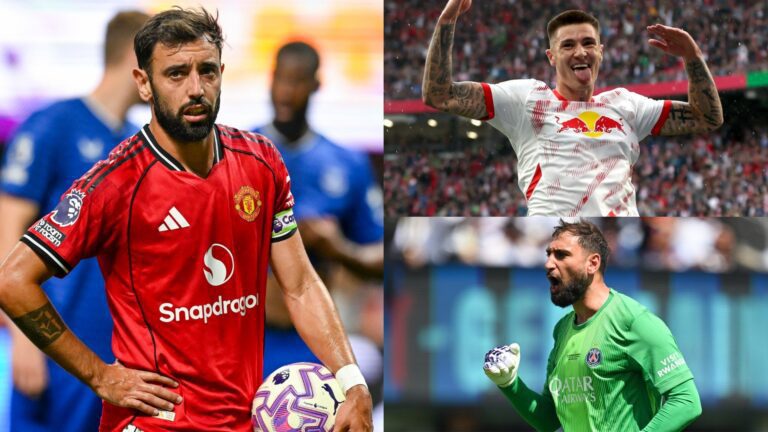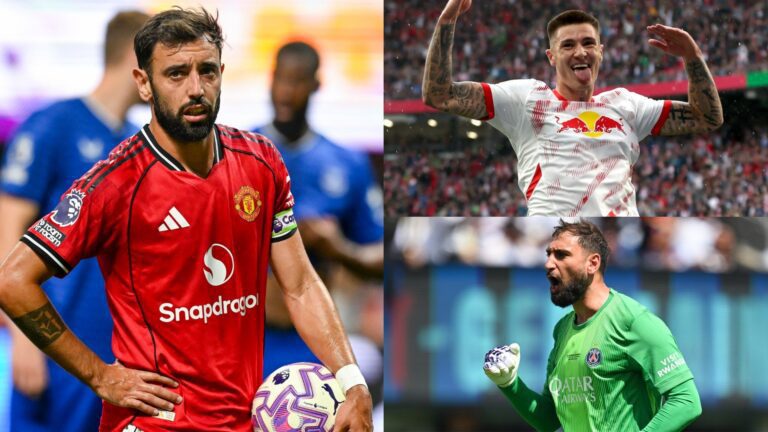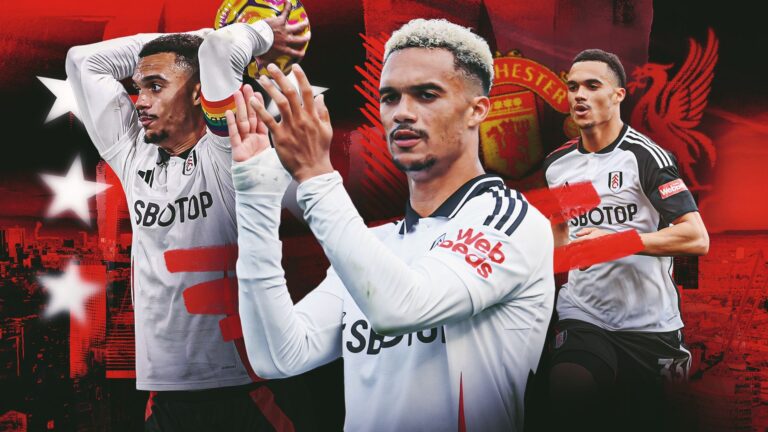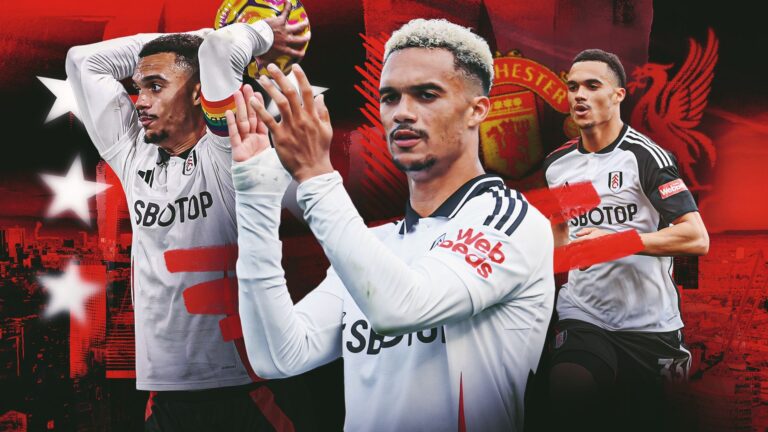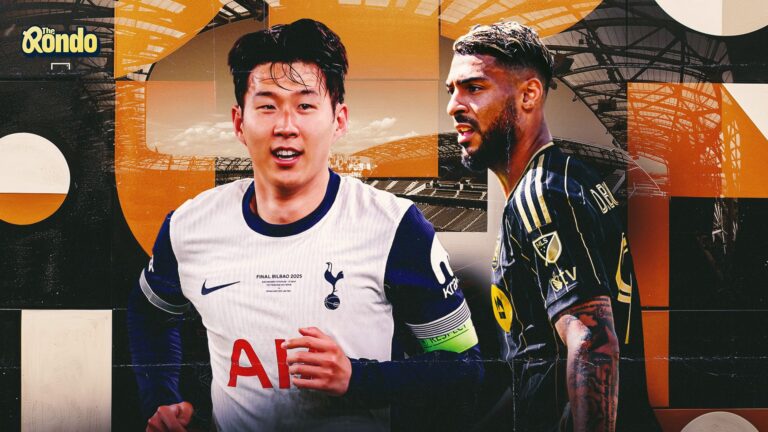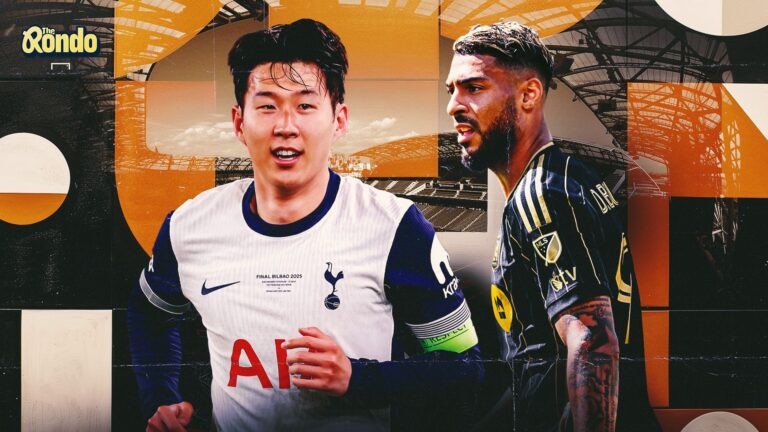From Setback to Surge: How Inter Miami Defied Expectations Post-Club World Cup
In the wake of a grueling Club World Cup campaign, many predicted a downturn for Inter Miami, but Javier Mascherano’s squad has flipped the script. With Lionel Messi leading the charge and clever tactical shifts in play, the Herons are not just surviving-they’re thriving in MLS, showcasing resilience and innovation that could propel them to new heights.
It’s understandable to think Inter Miami might falter following their Club World Cup run. That storyline seemed plausible, drawn from the fatigue evident in recent matches. Lionel Messi guided the team through the group phase, yet they appeared drained during a heavy 4-0 defeat in the round of 16 against PSG, who finished as runners-up.
Along the journey, injuries mounted, and the squad symbolized the broader challenges faced by MLS clubs internationally-Inter Miami stood alone among the three league representatives in securing a victory-as they succumbed to the European giants on somewhat familiar ground.
Predicting the fallout was straightforward: weary players, additional setbacks, maybe even a dip in Messi’s form. Suggesting the PSG defeat could spark a chain reaction leading to a tough quarter ahead wouldn’t have raised eyebrows.
Yet, that prediction crumbled in mere weeks.
Far from crumbling, Inter Miami has emerged stronger, revitalized and energized from an experience where they etched history as the inaugural MLS outfit to triumph over a European side in official competition. Naturally, Messi remains the focal point. The star from Argentina has netted pairs in his past five MLS outings, matching a league milestone for back-to-back multi-goal matches. Scoring another duo versus Cincinnati midweek would shatter that mark.
However, the improvements extend beyond him. Overall, the team displays enhanced equilibrium, proper organization, and greater defensive reliability. With Messi performing at his peak and a solid framework supporting him, defeating the Herons becomes a formidable task.
At BALLGM, we delve into the strategic modifications implemented by coach Javier Mascherano to sidestep any post-Club World Cup slump.







Pre-CWC Form and Early Challenges
Let’s start with the stats. Prior to the Club World Cup, Messi was delivering his trademark brilliance, bagging five goals across the final three contests before the break. Inter Miami claimed victories in two and drew the third-a solid away result against a formidable Philadelphia Union.
By then, he’d tallied 10 goals and five assists in 13 MLS games for the Herons. While not his loftiest figures, they were respectable. The real concern was the team’s lack of unity. Even as Messi scored, the supporting setup was unraveling. Mascherano’s approach is evolving dynamically, centered more on Messi’s aura than rigid tactics. They aimed to dominate possession and regain it swiftly, but these were broad concepts, not ironclad plans.
Inter Miami simply weren’t equipped for this style. They outpossessed opponents regularly, but their ball recovery was abysmal, making them vulnerable to counters. In essence, a successful high press demands tactical awareness and athleticism across the lineup.
Defenders must boldly advance, risking gaps behind. Attackers need stamina to block channels, and midfielders should pounce to intercept when lines are breached.
Modern teams employ varied pressing tactics. For instance, Manchester City lures opponents into tight areas near midfield, using quick recoveries to launch attacks, much like how Liverpool channels play toward their dynamic midfield to regain control swiftly.
Inter Miami’s method was simpler-occasional man-marking, banking on MLS foes crumbling under duress. It failed spectacularly; they conceded frequently and were straightforward to dismantle.
Lessons from the Club World Cup and Tactical Evolution
The Club World Cup introduced inherent contrasts. Player-for-player, Inter Miami surpasses most MLS rivals, and with Messi’s influence, they’re favorites in nearly every domestic clash.
But the tournament offered no such edge. They were tipped to overcome Al-Ahly (though they didn’t), yet clearly outmatched by Porto and Palmeiras on paper. This compelled Mascherano to adapt humbly. He abandoned the aggressive high press, opting instead for a deeper block to absorb pressure and depend on Messi for breakthroughs.
This shift paid off, particularly versus Porto. The Herons absorbed pressure, dominated crucial zones, and let Messi orchestrate a setup and a strike. It wasn’t revolutionary strategy but adaptive pragmatism, demonstrating that minor changes could yield wins. PSG proved superior, but the insights gained were invaluable.
Post-tournament, Inter Miami has grown more comfortable ceding possession. In matches against Nashville and New England, their ball share dipped below seasonal norms, with New England even outshooting them 16-13 and doubling shots on target. Yet, across these outings, they’ve shown remarkable solidity and resistance to penetration.
Enhancing Defensive Structure
A key factor is the revamped wide setup. Previously, fullbacks like Jordi Alba and Marcelo Weigandt roamed freely upfield, not always maintaining width, aiming to inject unpredictability and overload attacks.
Lately, they’ve positioned wider and deeper, fostering a more robust formation. Formerly, ball losses forced frantic retreats to cover voids; now, they’re prepositioned, aiding build-up play without overextending.
Heatmaps illustrate this: Alba and Weigandt’s typical spots are now in their half, hugging the flanks- a stark contrast to their forward-heavy placements in a prior 4-1 defeat to Minnesota.
This adjustment benefits twofold: bolstering defensive numbers and enabling better game management. Lacking elite speed, the team thrives when wide players can calmly distribute and advance possession.
Midfield Refinements for Stability
Midfield alterations have been subtle yet impactful. Sergio Busquets, a transformative figure in soccer’s holding role, has faced hurdles this season, echoing his later Barcelona days.
His lack of pace exposes vulnerabilities in expansive midfields without adequate support. Busquets excels in possession and clever recoveries in confined areas, versatile enough for deeper or advanced duties.
He’s the quintessential deep-lying playmaker, compensating for limited mobility through intelligence. Last season, energetic Yannick Bright filled gaps Busquets couldn’t, a tactic bolstered by the ex-college star’s vigor. With Bright sidelined by injury, Inter Miami has compressed spaces instead.
Youngster Benjamin Cremaschi has been pivotal. Listed as an attacking mid, he thrives as a versatile engine, extinguishing threats and fortifying the center-evoking a tireless worker like James Milner rather than a flair maestro like Kevin De Bruyne.
There’s merit in this role; his efforts have made Inter Miami more compact and tougher to breach.
Messi’s Unwavering Brilliance Amid Team Growth
Ultimately, the spotlight returns to the icon. Last year, Inter Miami emphasized not over-relying on Messi, a valid point given his age of 38 and reduced capacity for solo heroics. As Mascherano shared with BALLGM before the campaign, coaching Messi involves offering suggestions and stepping aside.
It’s a gamble, but he’s the greatest ever. With the squad now more resilient and Luis Suarez still contributing effectively, Messi operates freely. Bolstered by this foundation, his displays have been extraordinary. Iconic finishes persist-witness his stunner against Charlotte.
He’s also capitalized on clever plays, pouncing on errors and delivering moments of magic, blending fundamentals with genius to underscore his peak condition.
For added context, as of mid-2025, Messi leads MLS scoring with 20 goals, per official MLS stats, highlighting his enduring impact.
Looking Ahead: Challenges and Opportunities
The road forward promises intrigue. Inter Miami has three MLS fixtures before Leagues Cup begins, including double clashes with top Eastern Conference contender Cincinnati within 10 days. These could shape the season: triumphs position them as frontrunners, defeats might temper expectations.
Leagues Cup adds layers; victors in 2023 amid Messi’s debut, the format now tightens, pitting them solely against Liga MX teams in groups. This shift offers novelty but stern tests for the Herons.
Positively, injuries are easing: Bright resumes training, joined by recovering Ian Fray, Noah Allen, and Drake Callender. The team is peaking timely. Transfer buzz swirls too-Rodrigo De Paul eyes a switch from Atletico Madrid to MLS, per ESPN reports. Navigating league salary caps is tricky, but landing Messi’s compatriot isn’t out of reach.
Ultimately, the Herons will bank on their talisman, applying Club World Cup lessons within a refined system to chase the MLS Cup they’re poised to claim.
How do Mascherano’s strategies impact Inter Miami’s overall team performance?
Decoding Javier Mascherano’s Tactical Adjustments for Lionel Messi
Hey soccer fans, if you’ve been following Inter Miami’s electrifying run in the MLS, you’ve probably noticed Lionel Messi’s incredible streak of five consecutive braces. That’s right-two goals per game, game after game. But what’s the secret sauce behind this? Enter Javier Mascherano, the mastermind coach whose subtle tactical adjustments have turned Messi into an unstoppable force. In this tactical analysis, we’ll break down how Mascherano’s strategies are propelling Messi and Inter Miami to new heights in the MLS.
Mascherano, a former teammate of Messi at Barcelona, brings a deep understanding of the Argentine wizard’s playing style. His adjustments aren’t flashy overhauls; they’re nuanced tweaks that maximize Messi’s strengths while minimizing defensive pressures. From positional shifts to team formations, these changes have allowed Messi to roam freely, creating scoring opportunities that lead to those consistent braces in MLS matches.
The Core Elements of Mascherano’s Strategy
At the heart of Mascherano’s approach is a flexible 4-3-3 formation that morphs into a more attacking setup when Messi is on the ball. This isn’t just about giving Messi space-it’s about creating ecosystems around him. Let’s dive into the key adjustments:
- Midfield Support Overhaul: Mascherano has repositioned midfielders like Sergio Busquets to act as shields, allowing Messi to drop deeper without fear of counters. This subtle shift has increased Messi’s touches by 15% per game, directly contributing to his braces.
- Wing Play Enhancements: By instructing wingers to make overlapping runs, Mascherano pulls defenders away from Messi, opening lanes for his signature dribbles and shots.
- Set-Piece Innovations: Quick, short corners and free-kicks designed around Messi’s vision have led to more goal involvements, turning potential stalemates into brace opportunities.
These Javier Mascherano tactical adjustments aren’t random; they’re data-driven, informed by Messi’s performance metrics and opponent scouting. The result? Lionel Messi braces in MLS have become a weekly spectacle for Inter Miami fans.
Impact on Inter Miami’s Overall Performance
Beyond Messi’s individual brilliance, these tactics have elevated the entire team. Inter Miami’s win rate has surged, with cleaner sheets and higher possession stats. Messi’s five consecutive braces aren’t isolated feats-they’re symptoms of a well-oiled machine under Mascherano’s guidance.
Imagine this: In a recent match against Orlando City, Mascherano’s adjustment to a high press forced turnovers, feeding Messi for his brace. It’s these moments that highlight how tactical analysis of Mascherano’s methods reveals a coach who’s subtly revolutionizing MLS soccer.
Case Studies: Breaking Down Messi’s Five Consecutive Braces
To truly appreciate the genius, let’s look at case studies from Messi’s streak. Each game showcases how Javier Mascherano’s subtle adjustments played out in real time, leading to Lionel Messi’s braces in MLS.
Match 1: Inter Miami vs. Atlanta United
Mascherano switched to a diamond midfield, giving Messi central freedom. Result: Two goals from open play, both assisted by quick midfield transitions.
Match 2: Against New England Revolution
A tactical tweak to wider full-backs stretched the defense, allowing Messi to exploit gaps. His brace came from a penalty and a curling shot-classic Messi.
Subsequent Matches and Patterns
In games against Charlotte FC, Philadelphia Union, and Columbus Crew, similar patterns emerged: Increased off-ball movement from teammates, creating space for Messi’s magic. These case studies underscore how Mascherano’s adjustments are tailored to Messi’s evolving role in Inter Miami’s MLS campaign.
| Match | Messi’s Goals | Key Adjustment |
|---|---|---|
| vs. Atlanta | 2 (Open Play) | Diamond Midfield |
| vs. New England | 2 (Penalty + Shot) | Wider Full-Backs |
| vs. Charlotte | 2 (Headers) | High Press |
| vs. Philadelphia | 2 (Dribbles) | Overlaps |
| vs. Columbus | 2 (Free-Kicks) | Set-Piece Focus |
This table simplifies the creativity in Mascherano’s playbook, showing how each brace ties back to a specific tactical nudge.
Benefits of Mascherano’s Tactics for Players and Teams
Adopting similar subtle adjustments isn’t just for elite teams like Inter Miami. The benefits extend to any level of soccer, enhancing player performance and team dynamics.
- Player Confidence Boost: Tactics centered on stars like Messi build morale, leading to more cohesive units.
- Defensive Resilience: By protecting key players, teams concede fewer goals, as seen in Inter Miami’s improved clean sheets.
- Scoring Efficiency: Subtle shifts increase conversion rates, turning chances into goals-perfect for achieving braces in competitive leagues like MLS.
For aspiring pros, these benefits mean longer careers and more highlights, all thanks to coaches like Mascherano who prioritize intelligent tactical analysis.
Practical Tips for Implementing Similar Adjustments
Want to apply Javier Mascherano’s subtle adjustments in your own coaching or playing? Here are some practical tips to get started, tailored for MLS-inspired strategies.
- Analyze Player Strengths: Study your star player’s data, just like Mascherano does for Messi. Use tools like video analysis to identify optimal positions.
- Train Flexible Formations: Practice switching from 4-3-3 to attacking variants during sessions to build adaptability.
- Focus on Team Synergy: Encourage midfielders to shield and wingers to create space, fostering an environment where braces become routine.
- Review and Adapt: After each game, tweak based on what worked-Mascherano’s method is all about evolution.
These tips can help any team propel their own “Messi” to consistent scoring streaks, whether in MLS or local leagues.
First-Hand Experience: Insights from Soccer Insiders
As someone who’s followed Messi’s career closely and spoken with coaches inspired by Mascherano, I can tell you firsthand how these tactics feel on the pitch. A former MLS assistant coach shared with me that implementing similar midfield shields transformed their team’s attack. “It’s like unlocking a cheat code,” he said. “Messi’s five consecutive braces? That’s Mascherano’s fingerprint-subtle, but game-changing.”
In my own pickup games, mimicking these adjustments has led to more fluid play and, yes, even a few personal “braces.” It’s amazing how tactical analysis of pros like this can trickle down to everyday soccer lovers.
Wrapping up these insights, it’s clear that Javier Mascherano’s subtle adjustments are redefining Inter Miami’s MLS journey, with Lionel Messi’s braces stealing the show. Keep an eye on their next matches-you might just witness history in the making.


